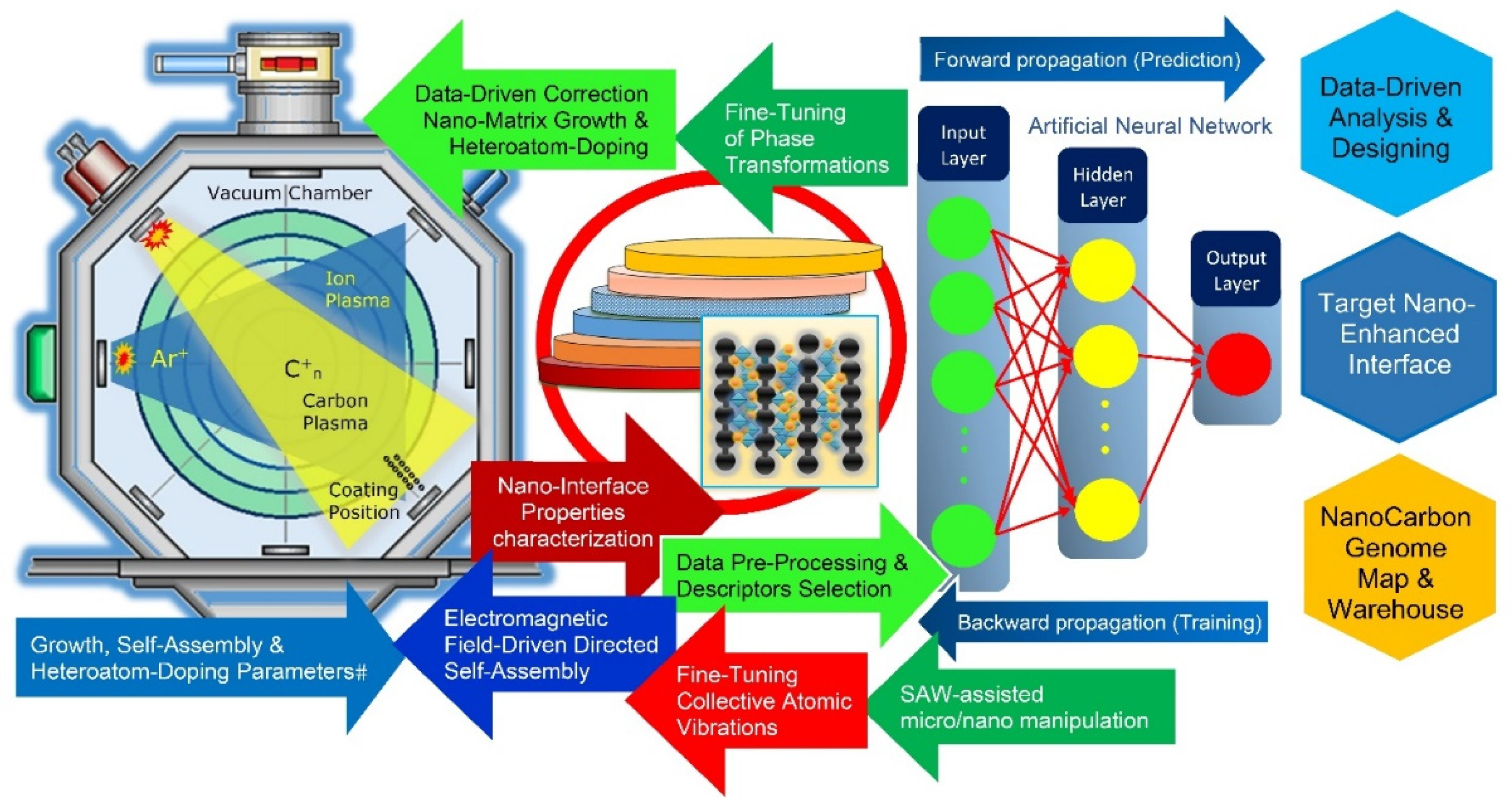Figure 1.
A visual representation showcases the data-based methodology employed to finely adjust and enhance the characteristics of low-dimensional nanocarbons. This systematic approach combines theoretical modeling, precise synthesis, characterization, and machine learning to enable the proactive engineering of low-dimensional nanocarbons through prediction.
Figure 1.
A visual representation showcases the data-based methodology employed to finely adjust and enhance the characteristics of low-dimensional nanocarbons. This systematic approach combines theoretical modeling, precise synthesis, characterization, and machine learning to enable the proactive engineering of low-dimensional nanocarbons through prediction.
Author Contributions
Conceptualization, A.L.; methodology, A.L. and O.G.; validation, A.L. and O.G.; formal analysis, A.L. and O.G.; investigation, A.L. and O.G.; resources, A.L. and O.G.; data curation, A.L. and O.G.; writing—original draft preparation, A.L.; writing—review and editing, A.L.; visualization, A.L.; supervision, A.L.; project administration, A.L. and O.G.; funding acquisition, A.L. and O.G. All authors have read and agreed to the published version of the manuscript.
Funding
This research work is jointly supported and funded by the Scientific and Technological Research Council of Turkey (TÜBİTAK) and the Russian Foundation for Basic Research (RFBR) - Russian Center of Scientific Information (RCSI) according to the research project № 20-58-46014.
Institutional Review Board Statement
Not applicable.
Informed Consent Statement
Not applicable.
Data Availability Statement
Not applicable.
Acknowledgments
The publication cost of this paper was covered by funds from the Russian Foundation for Basic Research (RFBR) - Russian Center of Scientific Information (RCSI) according to the research project No. 20-58-46014.
Conflicts of Interest
The authors declare no conflict of interest.
|
Disclaimer/Publisher’s Note: The statements, opinions and data contained in all publications are solely those of the individual author(s) and contributor(s) and not of MDPI and/or the editor(s). MDPI and/or the editor(s) disclaim responsibility for any injury to people or property resulting from any ideas, methods, instructions or products referred to in the content. |
© 2023 by the authors. Licensee MDPI, Basel, Switzerland. This article is an open access article distributed under the terms and conditions of the Creative Commons Attribution (CC BY) license (http://creativecommons.org/licenses/by/4.0/).





